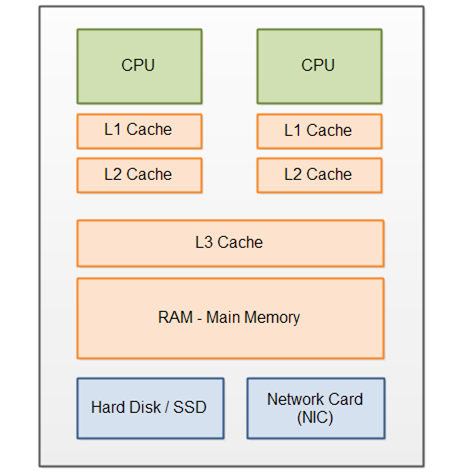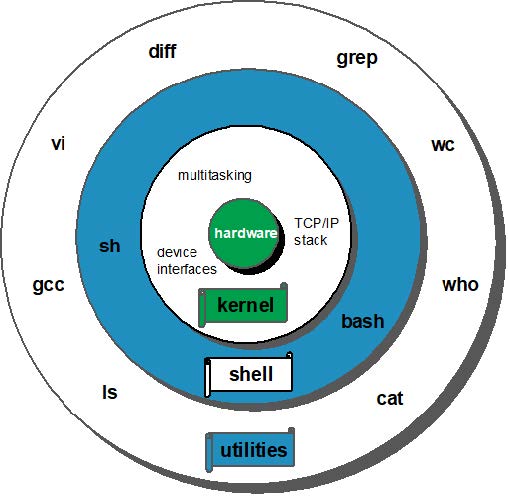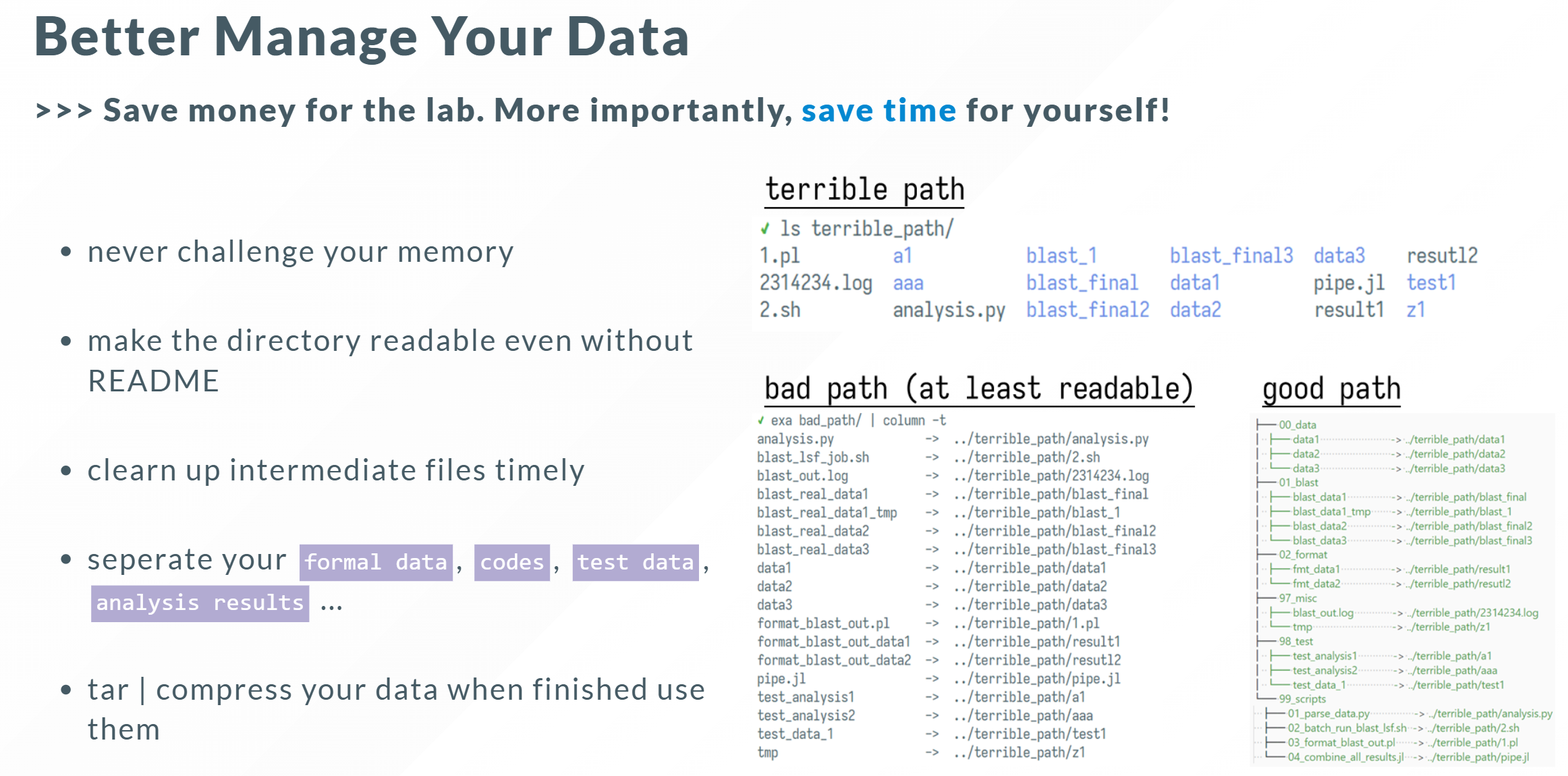生物信息学
1.2 针对生物信息学的Linux系统使用介绍
桂松涛 Blog
songtaogui@163.com

基本的计算/存储单元概念
CPU <=> 缓存 <=> 内存 <=> 硬盘
计算过程基本数据流方向: DISK -> RAM -> Cache -> CPU |

|
Linux操作系统简介
|
|
|
Linux系统结构
|
Linux系统结构: 
|
Linux基本概念
|
|
|
Linux终端基本操作: 文件/目录操作
|
|
Linux终端基本操作: 文本文件处理
|
|
Linux终端基本操作: IO, PIPE, FIFO
|
IO重定向:<, >, <<, >> |
Linux终端基本操作: IO, PIPE, FIFO
|
|
|
Linux终端基本操作: 资源管理器
|
|
|
Linux中的危险操作
|
|
|
Linux使用习惯: 1. 错误退出检查
exit status -> $? and set -o pipefail
# allergic to seven counter
function algc7(){
# I eat numbers in pipe, I died if I see seven
while read num;do
[[ "$num" == *"7"* ]] && exit 1
echo $num
done
}seq 10 | wc -l; echo $? # expect 10 and normal exit, get 10 and exit0
seq 10 | algc7 | wc -l; echo $? # expect 6 and error exit, get 6 and exit0, quack!set -o pipefail
seq 10 | algc7 | wc -l; echo $? # expect 6 and error exit, get 6 and exit1, good doctor!Linux使用习惯: 1. 错误退出检查
set -o nounset and set -o errexit
或者显式地进行错误退出检查:
# blah blah blah
# some woring code before
if [ $? ne 0 ];then
echo "[ERROR]: Some error msg" >&2
exit 1
fi检查输出结果合法性
# 文件是否有输出
if [ -s file ]; then ... fi
# 变量是否为空
if [ -z var ]; then ... fi
if [ ! -n var ]; then ... fiLinux使用习惯: 2. 目录结构规范

Linux使用习惯: 3. 及时备份、清理文件
绝大多数生信数据格式都是可压缩的, 尽量存储为压缩格式:
sam –> bam/cram & index
fasta/fastq –> bgzip & tabix
bed/gff/gtf/vcf –> bgzip & tabix
txt –> gzip
中间文件在流程中就要处理掉
定时备份数据
Bye ~